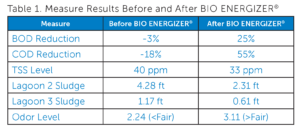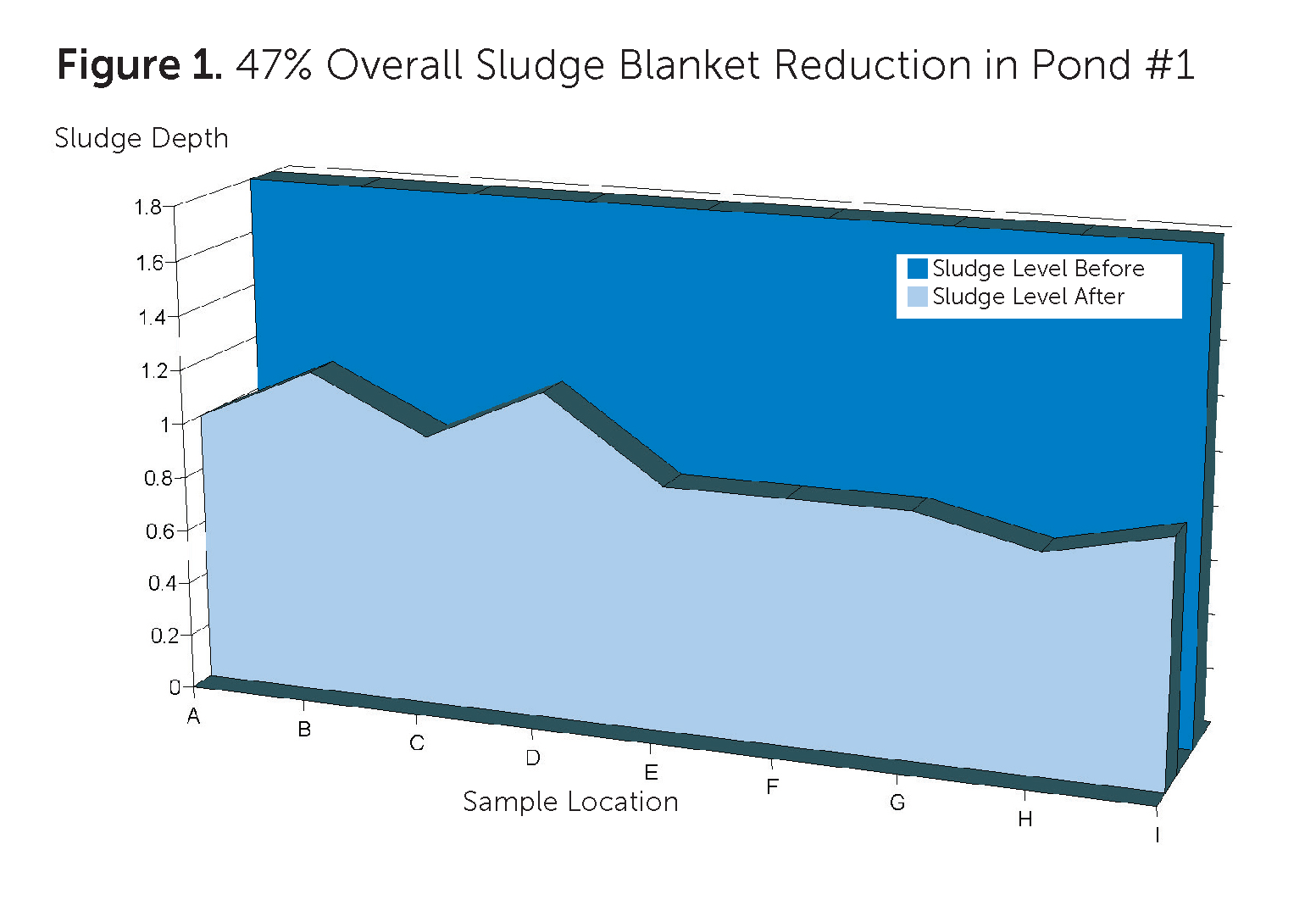The wastewater treatment plant superintendent for a rural Colorado town of about 500 people noticed that the plant’s three wastewater lagoons were filling with sludge, but he was dealing with budget constraints. The town’s population fluctuates throughout the year, and the varied loading was affecting system performance. In addition, the aeration systems were not keeping up with the oxygen demand in the ponds. The superintendent decided to try a bioremediation approach to sludge reduction, using BIO ENERGIZER®, before embarking on the expensive process of mechanically dredging, hauling, and disposing of the sludge.
Using BIO ENERGIZER® is now saving the city thousands of dollars in mechanical dredging, hauling, and disposal costs. Lagoon desludging using BIO ENERGIZER® is typically one-fifth to one-tenth of the cost of mechanical dredging and land-applying or land-filling sludge.
Read the full report in English online
Read the full report in Spanish online
Download the full report in English
Download the full report in Spanish
Related Posts

Case Study: Biological Remediation of Crude Oil Contaminated Soil
Full Case Study Introduction: A remediation company in Arizona was selected to complete a Remedial Action Plan for soils contaminated with crude oil located in an oil production field in Texas. The crude oil contaminated soil was generated from storage tank bottom materials which had been removed from several oil recovery storage tank batteries located

BIO ENERGIZER® Reduces Sludge at Sugar Refinery Wastewater Treatment Lagoons
Location: Louisiana A large sugar refinery struggled with elevated BOD and COD values in its wastewater treatment lagoons due to the sugar refinery process. The lagoon wastewater system capacity was 25 million gallons with an influent of 1.25 million gallons per day. The wastewater system also suffered from accumulating sludge as well as significant odor

Our Most Popular Case Studies
Bioremediation can improve the activity and reproduction of wastewater microbiology. The following case studies used bioremediation to improve wastewater treatment conditions and operating costs.


